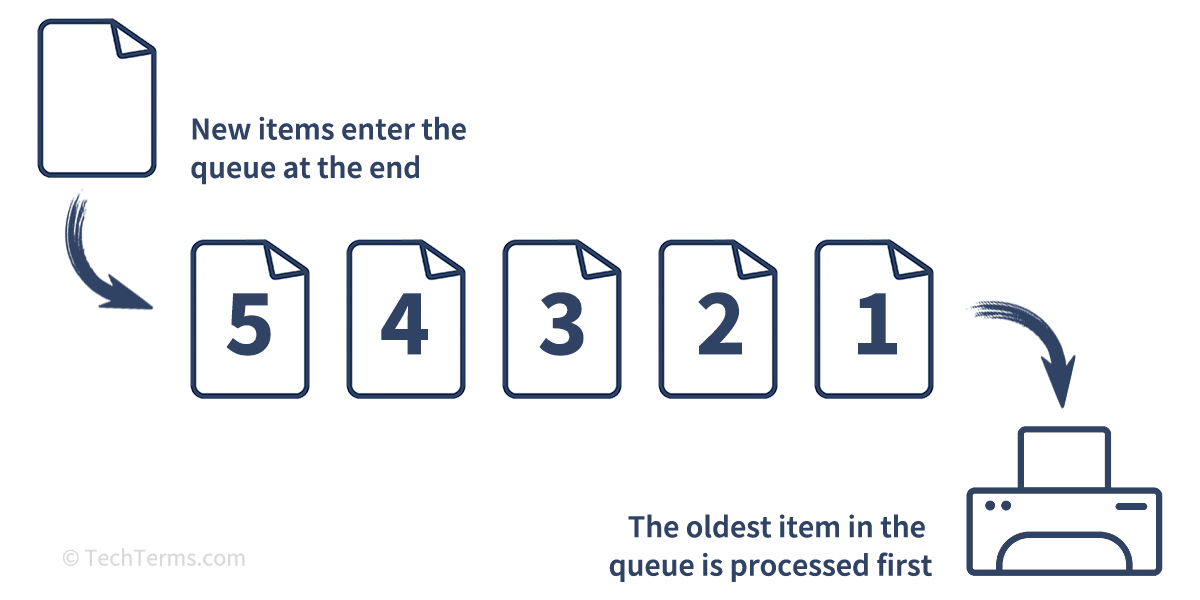FIFO
Stands for "First In, First Out."
FIFO is a method for organizing, processing or retrieving data or other objects in a queue. In a FIFO system, the data that has been waiting the longest gets processed first whenever there is an opening. New objects are added to the back of the queue and must wait their turn as the system processes each object in order.
The FIFO model is one of the most basic ways to process data. It does not allow one object to jump the line or weigh the priority of multiple items when choosing what to process next — everything waits its turn without exception. The opposite of the FIFO model is the LIFO model, or last-in-first-out, where the newest entry is processed first.

Many computer queues operate using a FIFO model. For example, a network printer in a busy office will use a FIFO queue to schedule print jobs as they come in, even if your document is only two pages and the job right before yours is a hundred. Computers also typically use FIFO scheduling when pulling data from an array or buffer. Disk write scheduling, process scheduling, and message systems also often use a FIFO model to handle requests in order without consideration for high or low priority.
 Test Your Knowledge
Test Your Knowledge